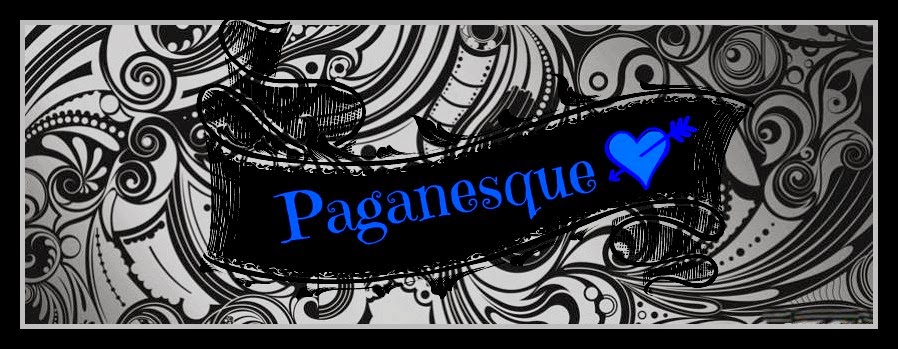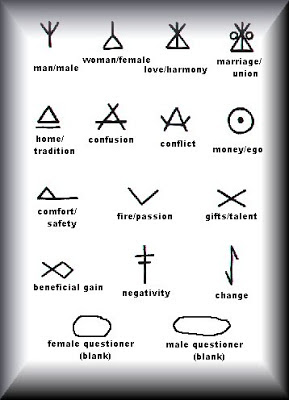I have always found Runes fascinating. I don't have a long history with the Futhark runes, I did buy the kit 15 years ago and used them a few times, but it was the Goddess Runes I loved. At the expense of Wild Witch I am going to start posting about Runes, so here they are :) I'm learning about them, along with you dear reader :)
What are Runes?
·
Runic
Alphabets are the ancient alphabets used by the Germanic peoples of Europe in
around 150-1100 AD. The letters from the alphabets are known as runes
·
Runology
is the study of runic alphabets, runic inscriptions, rune stones and their
history.
·
Runes
were replaced by the Latin alphabet as Christianity spread through Europe.
Origin of the Runes
It is said
in the poem Havamal, in the Poetic Edda, that Odin hung upside down
from Yggdrasil for night days and nights, and learned the secret of the Runes.
How many types of Runes are there?
There are
three best known types of Runes are
1. Elder Futhark (AD 150-800)
2. Anglo-Saxon Futhorc (AD400 – 1100)
3. Younger Futhark
( AD 800 – 1100) – these runes are divided into long branch (“Danish”), short
branch (“Rök”) and staveless runes (“Hälsinge” or “Stavestyle”). From
the Younger rune, the Marcomannic runes, Medieval runes (AD 110-1500) and
Dalecarlian runes (AD 1500-1800) developed.
The reason
they are called the Futhark Runes is because the first 6 letters are F, u, th,
a, r, k
History of Runes
·
Runes
were used by Germanic peoples from 1st – 2nd Century AD.
·
There
is no distinction in the surviving inscriptions between long and short vowels.
·
The
origin of the name Runes may come from the Gothic runa or root run- meaning
“secret” or “whisper”. The root run-
in Baltic languages means speech. In Finnish runo means “song” or “poem”. Old English – “mystery”
How were Runes used?
·
Were
(and can be) used as symbols of power – etched into wands, talismans, amulets
to invoke the power of their meaning in those tools.
·
Have
been used as written language for communication – you will even see them now as
decorations, tattoos, signatures. It is probable that there are people using
them as a form of communication, even though it’s not official. By this I don’t
mean tribes of people hidden in forests and caves... but people in groups, or
covens, or even solitaries who use them in their own book of shadows or for
spells and rituals.
·
The
use of Runes is what Buckland refers to as the power of the written word – and
there are many scripts from the Theban Script (Witches Alphabet) to Egyptian
hieroglyphs to Angelic and Pictish alphabets.
·
Runes
are commonly used as a divination tool – much like Tarot cards. One can choose
a single rune and consider its meaning, or they can do spreads and interpret
the combinations of Runes a variety of ways.
Source Wikipedia - http://en.wikipedia.org/wiki/Runes
Source – Buckland’s’ Complete Book of Witchcraft
The Goddess Runes :)
Now these are the Runes I'm familiar with - I have to admit, these are the ones I have been using since I was 15, not the Elder Futhark or other variants. So naturally I understand these better than the other ones. But I am also here to learn so we can all learn together!
With these runes, you cup them in your hands while thinking of the question. You then take out the blank runes and place the one representing the questioner (you or the other person, ) or the person you are asking a question about in front of you. Then you shake the runs a little more and 'throw' them. Not actually throwing them of course! But you basically open your hands and they will fall around the question stone in various shapes and styles - the fun then is in reading and interpreting what you see. I love them. Unfortunately I have lost one of them somehow, and I do feel its' loss.. so haven't been able to do any rune readings - I need to go and find 16 stones in nature somewhere to make the set anew.. or find a missing stone
If you want to read more about Goddess Runes, then definitely get yourself a copy of "Goddess
Runes" by P.M.H Atwater, 1996, Avon Books.




























